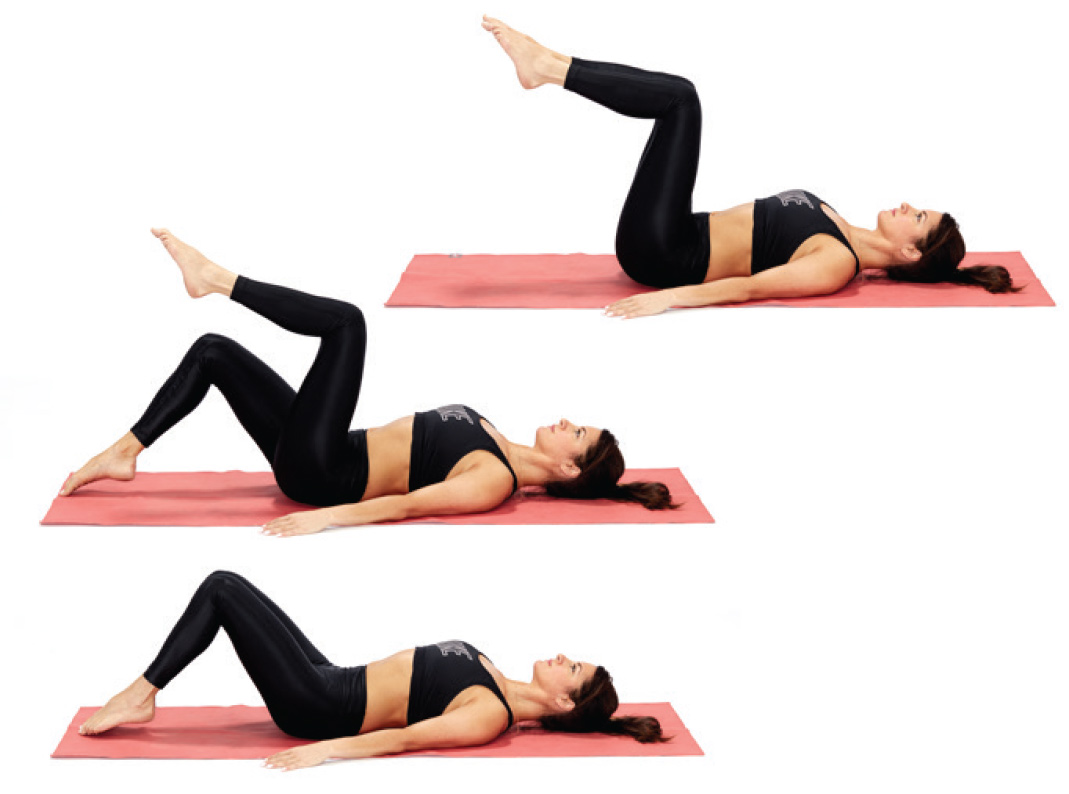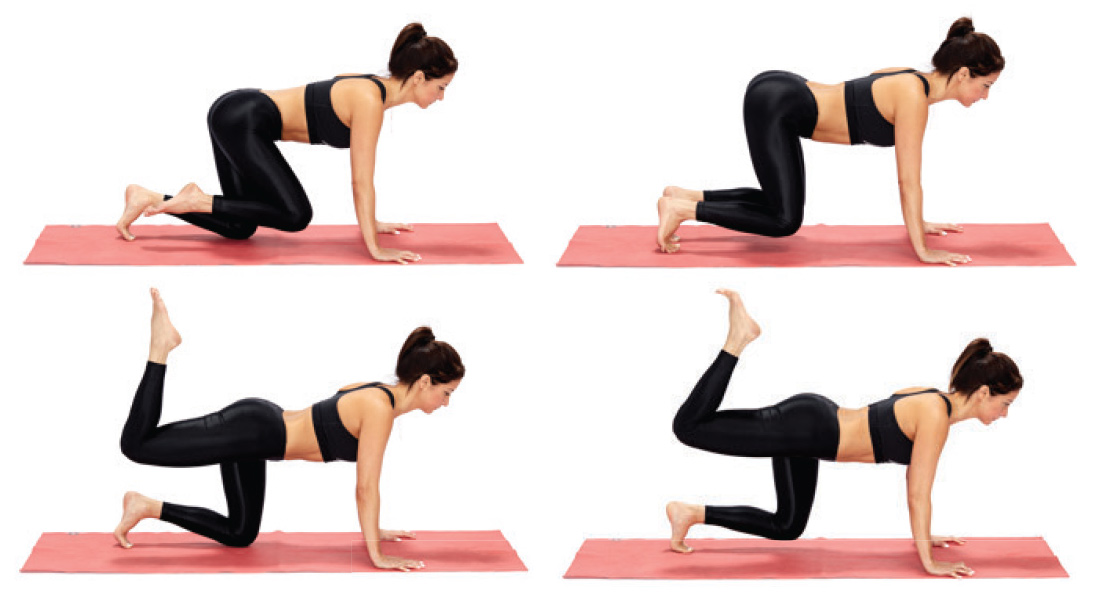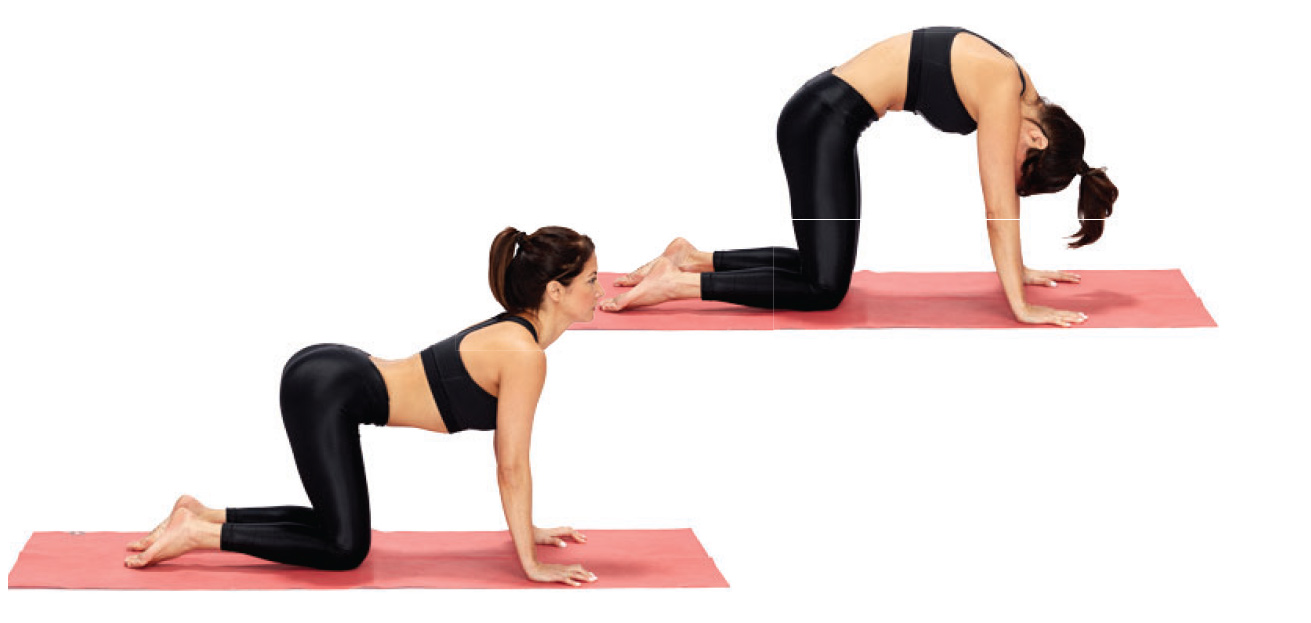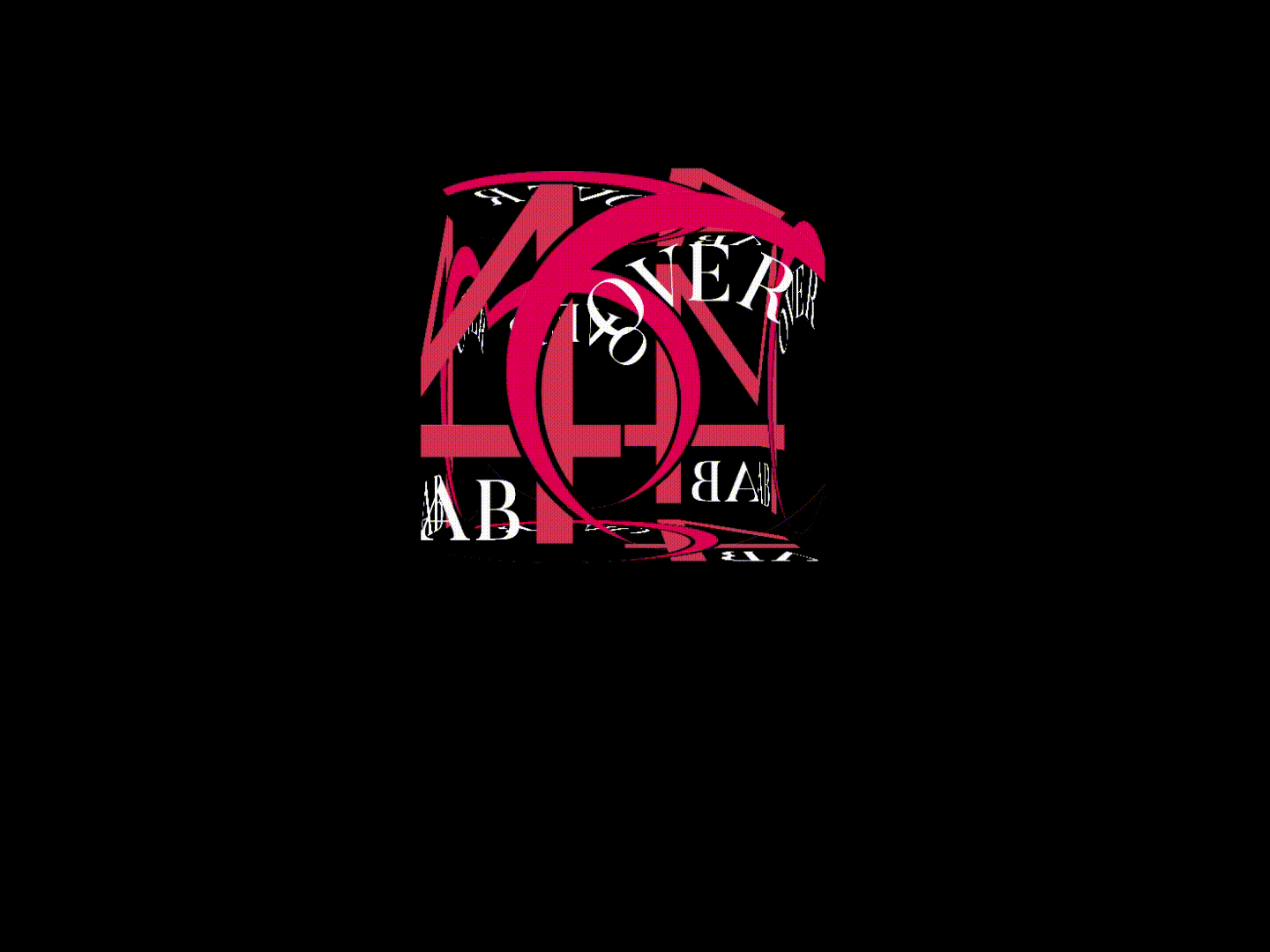Tap into the power of Pilates with this full-body workout sequence
Toe tap (single leg and both legs)

Suffer from low back pain? Low can be due to weakness and underuse of specific deep center-core muscles. This exercise will strengthen your transverse abdominis, the deep layers that support your lumbar spine. Developing strength with this movement will allow for freedom in any task or activity helping to prevent injuries as tissues are trained to support the spine.
Side forearm plank leg raises to hip dip

Your center supports your upper and lower body and this exercise in combination with toe taps strengthens the side body, while the leg raises to strengthen the glutes and tensor fasciae late, which stabilize the pelvis. Hip dips not only strengthen the waist but also allow for elasticity and ease of movement.
TIP
Train your body in the movements you’re limited in.
Internal and external rotation of the femur

Low back pain can come from a lack of internal rotation due to weak adductors, limited range of motion, and overuse of abductors. Challenging the range (while keeping the pelvis stacked) and hydrating the joints through this movement allows for more range of motion, helps to increase blood flow to heal any existing injuries and/or discomforts, and creates space in the lumbar spine for better function.
Forearm plank hamstring curl to assisted push-up

As you hold the forearm plank through this exercise, the center core is challenged giving you a stronger core for stability in the spine and pelvis. Hamstring curls are key in strengthening the lower and upper back and stabilizing knee joints. This full-body exercise targets steadying the pelvis and strengthening back muscles, glutes, hamstrings, and shoulders. The added push-ups with one leg raised challenge coordination and strengthen the chest and arms. Plus, the movement requires focus and awareness to balance evenly—having more body awareness is essential for day-to-day activities and better function.
Donkey kick

Our daily movements include walking, sitting, and moving our arms and legs in ranges that are available. And if you’re sitting for many hours, for example, gluteal atrophy is possible and quads hip flexors. can get weak. Through the exercises in this routine, however, you will teach the nervous system that there is a more available range and help to better prepare the tissues for the load. These donkey kicks help to strengthen the back muscles and hamstrings, which help to support the entire back body and pelvis. Make it more advanced by lifting your knees off the met; this will challenge the entire core body.
Cat-cow to swim prep

The movement of your spine is key for freedom in the joints, shoulders, and hips. Challenging and articulating the spine outside of its patterns is essential for mobility and longevity. Swim prep is a contralateral move, challenging the pelvis to stabilize while also strengthening the core. The action of reaching fingertips to toes helps to both lengthen and strengthen tissues. This also relieves tension in the thoracic spine, which teaches the nervous system of its greater range, and is essential for postural vitality.
Hyperextension to swimming and child’s pose

This isometric move for the entire backline of the body laying prone challenges the extension of the spine. It’s a move that is lacking in our day-to-day, and it can help improve posture and minimize kyphosis (rounded upper back). Engaging the rear deltoids and squeezing the shoulder blades to the spine while also engaging the glutes and hamstrings is a rejuvenating move that works the entire back body.
TIP
Move your spine daily to release and reset the nervous system.
Photos By BRANDON ALLEN Follow (@BRANDONALLEN)
















